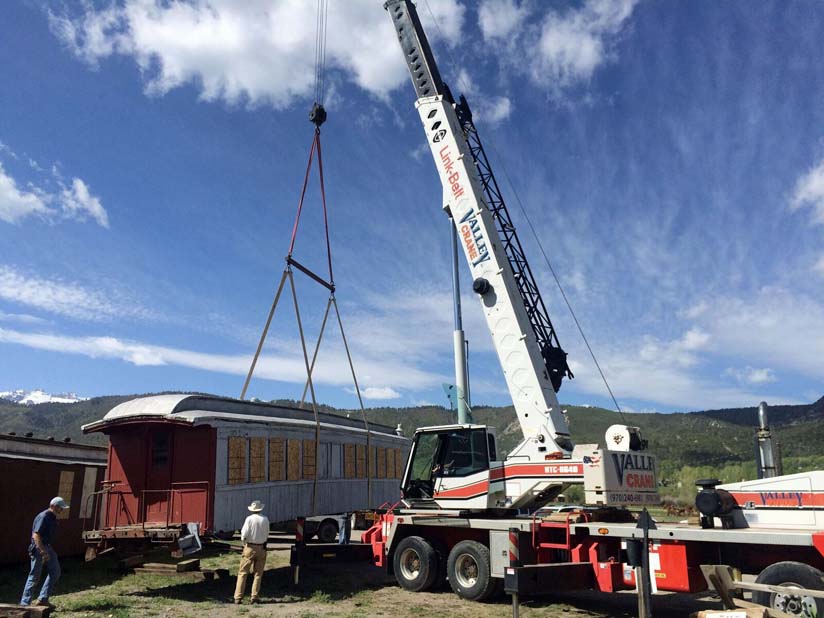
Ridgway Colorado USA - The Rio Grande Southern 252, a passenger car from Ridgway's historic past, was brought in to the Railroad Museum by semi-truck, to be restored by museum volunteers.
Karl Schaeffer, museum president, described the car as "one of a dozen of premier Rio Grande Southern artifacts in the world."
However, the 22,000 pound car was too much for the crane to get onto the tracks.
"This crane isn't big enough to make the reach we need it to make," said Schaeffer, pointing to the respectable-sized lifting machine.
"The car's a little heavier than we expected it. What we're going to do is pick it up, set it over there, and get it out of the way."
Before the car was lifted, Schaeffer and the crane operator hopped on top of the 252 and attached the necessary restraints to keep the car intact and suspended.
Although the car looked worn, glimpses of its former glory came through.
The crane whirred as it slowly raised the car from the semi bed.
Once it reached about two feet in the air, volunteers started directing it to its temporary resting place.
Railroad ties were arranged beneath the floating 252 to keep the car off the ground.
However, as the crane began to lower the car, one of the volunteers noticed it was backwards.
If it was going to be attached to a train in the future, it would have to be rotated.
Backtracking, the crane pulled the car back.
Museum volunteers surrounded the 252 and spun it to its proper direction.
From there, the 22,000 pound piece of history was lowered next to where Business Car C already sits.
The 252 was built in 1880 and purchased by the Rio Grande Southern in 1891.
Carrying about 48 people, it was used in scheduled passenger trains from Ridgway to Durango, Denver, or Grand Junction.
Passengers paid a couple of dollars for the trip, equal to about $100 today.
"Up until 1911, this is how people got to wherever they wanted to go, unless they wanted to ride a horse, which is pretty slow and not terribly comfortable. When they built the railroads in here, suddenly it's an overnight trip to Denver in a heated coach," said Schaeffer.
Dalton Carver.
provisions in Section 29 of the Canadian
Copyright Modernization Act.










